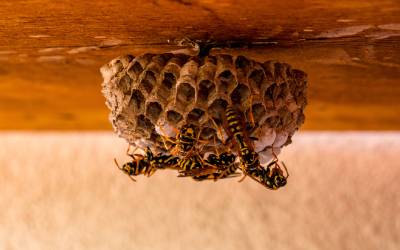 While we sometimes wish we never had to deal with them, bees, wasps, and hornets aren’t leaving Baton Rouge any time soon. These insects are crucial contributors to our local ecosystems through pollination and insect regulation. As such, they’ve developed a bit of an attitude! If you disturb their business, bees and wasps, especially the latter, can dish out painful stings. Wasps in particular are capable of stinging over and over to defend their nests. Are you wondering what you can do to protect yourself from wasp stings this summer? Read on to learn from the wasp control experts at Dugas Pest Control!
While we sometimes wish we never had to deal with them, bees, wasps, and hornets aren’t leaving Baton Rouge any time soon. These insects are crucial contributors to our local ecosystems through pollination and insect regulation. As such, they’ve developed a bit of an attitude! If you disturb their business, bees and wasps, especially the latter, can dish out painful stings. Wasps in particular are capable of stinging over and over to defend their nests. Are you wondering what you can do to protect yourself from wasp stings this summer? Read on to learn from the wasp control experts at Dugas Pest Control!
Tips to Avoid Wasp Stings
If you want to successfully avoid wasp stings, the most important strategy is trying to keep them out of your yard in the first place. You can prevent wasps from showing up on your property by doing the following:
- Be sure not to leave out sweet or protein-rich foods and drinks
- Dispose of food in sealed bins, especially soda cans or sugary foods
- Keep your lawn, plants, and trees trimmed to prevent opportunities to build hidden nests
If it’s too late and wasps have already set up shop in your yard, a different protocol becomes more important. Here are some ways to avoid stings from wasps that already live on your property:
- Move slowly and cautiously around their nests to avoid drawing attention to yourself
- Stay still if a wasp approaches you
- Don’t try to bat the wasp away, because they will use pheromone signals to call for help
- If you have to run away, do so in a straight line without waving your arms
Treating Wasp Stings
Wasps have been known to sting seemingly unprovoked. Sometimes, being in their way is enough of an offense for them to justify stinging you. If you’ve been stung, here are some ways to soothe your symptoms:
- Use an ice pack or a cool rag as a cold compress
- Take over-the-counter painkillers like ibuprofen to deal with pain
- Take an antihistamine for swelling around the sting
If someone experiences nausea, faintness, difficulty breathing, or swelling of the face and mouth shortly after a wasp sting, call an ambulance. These are signs of anaphylaxis, which is a serious form of allergic reaction.
Professional Wasp Nest Removal in Baton Rouge
It’s important to never try to get rid of wasp nests on your own. Wasp nests are notorious for hosting a deceptively large number of individuals, so damaging or disrupting a wasp nest can lead to dozens of stings. Call your local wasp removal experts if you need to get rid of a nest. Our technicians at Dugas Pest Control are trained in multiple types of safe, non-toxic wasp control practices. We can remove your nests and make sure no more are built. For a free quote, reach out today!

 Everyone is happy to be out and about enjoying the sunshine this spring here in Baton Rouge LA. Unfortunately, the combination of consistent warmth and rainfall in our climate creates a haven of resources and shelter for all kinds of regional critters. If you aren’t careful, you could allow your backyard to become a home to many kinds of pests for several different reasons. Our expert exterminators at Dugas Pest Control are here to help prevent this. Read on for advice on how to make your backyard pest-free through the summer!
Everyone is happy to be out and about enjoying the sunshine this spring here in Baton Rouge LA. Unfortunately, the combination of consistent warmth and rainfall in our climate creates a haven of resources and shelter for all kinds of regional critters. If you aren’t careful, you could allow your backyard to become a home to many kinds of pests for several different reasons. Our expert exterminators at Dugas Pest Control are here to help prevent this. Read on for advice on how to make your backyard pest-free through the summer!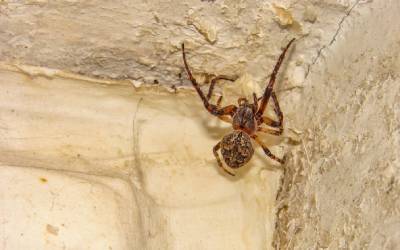 Over the years, our spider exterminators have helped out many arachnophobes around the Baton Rouge LA area. While there are a few species of
Over the years, our spider exterminators have helped out many arachnophobes around the Baton Rouge LA area. While there are a few species of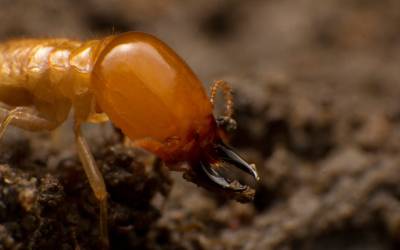 Unfortunately, here in Baton Rouge LA, we have more than one type of termite to worry about. Termites are the most destructive pests in the country, and each species attacks our homes and businesses in different ways. Being able to identify different types of termites by their appearance and the damage that they cause will be a huge help in the event that you find evidence of their arrival on your property. To learn more about the different types of termites in Baton Rouge, read on. Our termite exterminators at Dugas Pest Control have put together some vital information that could protect your home or business down the line!
Unfortunately, here in Baton Rouge LA, we have more than one type of termite to worry about. Termites are the most destructive pests in the country, and each species attacks our homes and businesses in different ways. Being able to identify different types of termites by their appearance and the damage that they cause will be a huge help in the event that you find evidence of their arrival on your property. To learn more about the different types of termites in Baton Rouge, read on. Our termite exterminators at Dugas Pest Control have put together some vital information that could protect your home or business down the line! Do you hear scratching or scurrying noises coming from your ceiling? Unusual noises are usually the first sign that animals may be living in your attic or walls, but there are other indicators as well. Without experience, it can be difficult to tell what kind of animal is in the attic and how serious the problem is. Our staff of experts at Dugas Pest Control can help with this assessment! We have seen all kinds of animals living in our customers’ homes and businesses in Baton Rouge, and we can help you remove them quickly and safely. Keep reading to learn more!
Do you hear scratching or scurrying noises coming from your ceiling? Unusual noises are usually the first sign that animals may be living in your attic or walls, but there are other indicators as well. Without experience, it can be difficult to tell what kind of animal is in the attic and how serious the problem is. Our staff of experts at Dugas Pest Control can help with this assessment! We have seen all kinds of animals living in our customers’ homes and businesses in Baton Rouge, and we can help you remove them quickly and safely. Keep reading to learn more!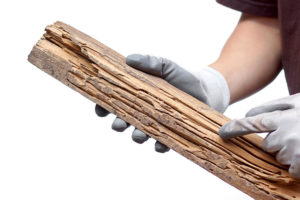 When selling a home, it is essential that a number of checks are carried out. These include structural, electrical, and plumbing. With
When selling a home, it is essential that a number of checks are carried out. These include structural, electrical, and plumbing. With 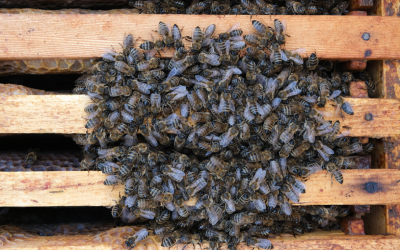 In Louisiana, bees are one of the most active insects in the spring and summer. All types of bees are essential to our ecosystem due to the fact that they are pollinators. During the warmer months of the year, they are found in abundance in our gardens, parks, and neighborhoods. But what happens to bees when colder temperatures start to sneak in during the winter? Many bees will die off, while some actually go into an overwintering state similar to hibernation.
In Louisiana, bees are one of the most active insects in the spring and summer. All types of bees are essential to our ecosystem due to the fact that they are pollinators. During the warmer months of the year, they are found in abundance in our gardens, parks, and neighborhoods. But what happens to bees when colder temperatures start to sneak in during the winter? Many bees will die off, while some actually go into an overwintering state similar to hibernation. Electing to take care of things yourself rather than involve professionals always seems like an inexpensive and favorable option. However, DIY
Electing to take care of things yourself rather than involve professionals always seems like an inexpensive and favorable option. However, DIY 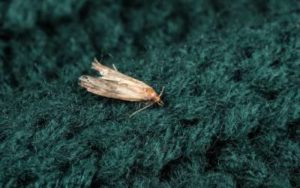 Are you experiencing moth problems in your closet or wardrobe? There are plenty of moth species to go around here in Baton Rouge LA, but one of the most prominent ones is the clothes moth. They live and breed in the spaces that we store our clothes, eating up their fabrics and tearing holes through them in the process. Being so small and having such a quick breeding turnaround, they can build up a significant population and cause serious damage before you ever discover them. If you’re looking for advice on how to get rid of moths in the closet, read on for some info from the experts at Dugas Pest Control!
Are you experiencing moth problems in your closet or wardrobe? There are plenty of moth species to go around here in Baton Rouge LA, but one of the most prominent ones is the clothes moth. They live and breed in the spaces that we store our clothes, eating up their fabrics and tearing holes through them in the process. Being so small and having such a quick breeding turnaround, they can build up a significant population and cause serious damage before you ever discover them. If you’re looking for advice on how to get rid of moths in the closet, read on for some info from the experts at Dugas Pest Control!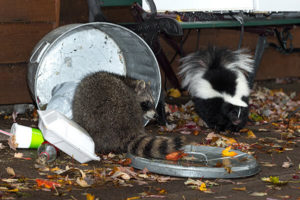 Wildlife exclusion is one of the most important services that we offer here at Dugas Pest Control. Especially as the temperatures wane into winter, wild animals of all sorts are looking to take shelter on our properties, even inside our homes. To prevent wild animals from taking up residence in your home, bringing with them the risks of property damage and disease, it’s important to sign up for wildlife exclusion services administered by your local exterminators. But what exactly is wildlife exclusion? To learn more about how we keep wild animals out of our customers’ homes around Baton Rouge LA, read on!
Wildlife exclusion is one of the most important services that we offer here at Dugas Pest Control. Especially as the temperatures wane into winter, wild animals of all sorts are looking to take shelter on our properties, even inside our homes. To prevent wild animals from taking up residence in your home, bringing with them the risks of property damage and disease, it’s important to sign up for wildlife exclusion services administered by your local exterminators. But what exactly is wildlife exclusion? To learn more about how we keep wild animals out of our customers’ homes around Baton Rouge LA, read on!